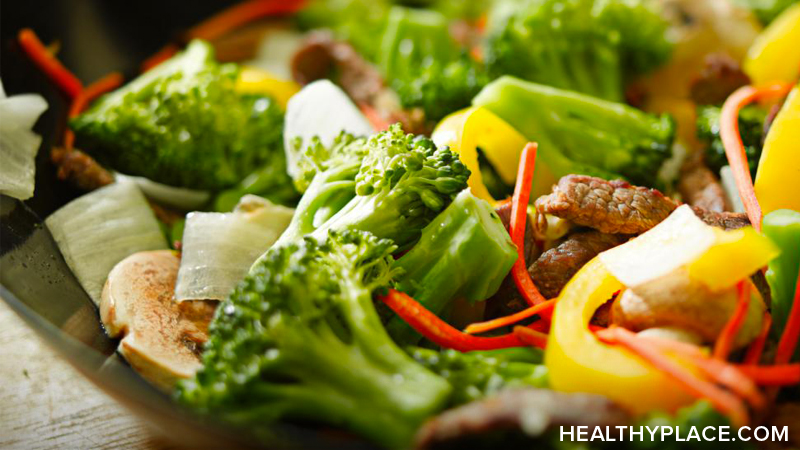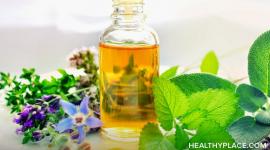Vitamin B5 (Pantothenic Acid)

Vitamin B5 is essential to the production of sex and stress-related hormones. Learn about the usage, dosage, side-effects of vitamin B5.
Common Forms: calcium pantothenate, pantethine, panthenol
- Overview
- Uses
- Dietary Sources
- Available Forms
- How to Take It
- Precautions
- Possible Interactions
- Supporting Research
Overview
Vitamin B5, also called pantothenic acid, is one of eight water-soluble B vitamins. All B vitamins help the body to convert carbohydrates into glucose (sugar), which is "burned" to produce energy. These B vitamins, often referred to as B complex vitamins, are essential in the breakdown of fats and protein. B complex vitamins also play an important role in maintaining muscle tone in the gastrointestinal tract and promoting the health of the nervous system, skin, hair, eyes, mouth, and liver.
In addition to playing a role in the breakdown of fats and carbohydrates for energy, Vitamin B5 is critical to the manufacture of red blood cells as well as sex and stress-related hormones produced in the adrenal glands (small glands that sit atop of the kidneys). Vitamin B5 is also important in maintaining a healthy digestive tract and it helps the body use other vitamins (particularly B2 [riboflavin]) more effectively. It is sometimes referred to as the "anti-stress vitamin" because it is believed to enhance the activity of the immune system and improve the body's ability to withstand stressful conditions.
Pantethine, an active stable form of vitamin B5, has been gaining attention in recent years as a possible treatment for high cholesterol. Further studies are needed to confirm these findings, however, Panthanol, another form of vitamin B5, is often found in hair care products because of the belief that it makes hair more manageable, softer, and shinier.
Vitamin B5 can be found in all living cells and is widely distributed in foods so deficiency of this substance is rare. Symptoms of a vitamin B5 deficiency may include fatigue, insomnia, depression, irritability, vomiting, stomach pains, burning feet, and upper respiratory infections.
Vitamin B5 Uses
Wound Healing
Studies, primarily in test tubes and animals but a few on people, suggest that vitamin B5 supplements may speed wound healing, especially following surgery. This may be particularly true if vitamin B5 is combined with vitamin C.
Burns
It is especially important for people who have sustained serious burns to obtain adequate amounts of nutrients in their daily diet. When skin is burned, a substantial percentage of micronutrients may be lost. This increases the risk for infection, slows the healing process, prolongs the hospital stay, and even increases the risk of death. Although it is unclear which micronutrients are most beneficial for people with burns, many studies suggest that a multivitamin including the B complex vitamins may aid in the recovery process.
High Cholesterol
Throughout the past twenty years or so, emerging studies of animals and people have suggested that high doses of pantethine (a stable form of vitamin B5) may improve cholesterol and triglyceride levels in people with high cholesterol with or without other risk factors for heart disease (such as diabetes, obesity, and menopause). The studies to date have included only small numbers of people, but have been encouraging because not only has pantethine lowered cholesterol and triglycerides, it has also increased HDL (the "good" kind of cholesterol). Plus, several of the studies have looked at the use of pantethine in special groups of people, such as adults on dialysis and children with high cholesterol. More research is needed in this area to fully understand what value pantethine may have for treating or preventing high cholesterol.
Other related areas that are under current scientific investigation include use of pantethine for heart disease and for weight loss.
Arthritis
Although not widely studied to date, there may be some benefit to making sure that there is an adequate amount of pantothenic acid in the diet or taking extra vitamin B5 supplements for arthritis.
For example, some researchers report that blood levels of pantothenic acid are lower in people with rheumatoid arthritis than those without this condition. A study conducted in 1980 concluded that 2,000 mg/day of calcium pantothenate improved symptoms of rheumatoid arthritis including morning stiffness and pain. Further studies are needed to confirm these findings, however.
Similarly, obese patients with osteoarthritis may improve their symptoms if they receive dietary counseling about appropriate intake of vitamin B5 (as well as other nutrients) and weight loss.
Vitamin B5 Dietary Sources
Pantothenic acid gets its name from the Greek root pantos, meaning "everywhere," because it is available in a wide variety of foods. A lot of vitamin B5 is lost in processing, however. Fresh meats, vegetables, and whole unprocessed grains have more vitamin B5 than refined, canned, and frozen food. The best sources of this vitamin are brewer's yeast, corn, cauliflower, kale, broccoli, tomatoes, avocadolegumes, lentils, egg yolks, beef (especially organ meats such as liver and kidney), turkey, duck, chicken, milk, split peas, peanuts, soybeans, sweet potatoes, sunflower seeds, whole-grain breads and cereals, lobster, wheat germ, and salmon.
Vitamin B5 Available Forms
Vitamin B5 can be found in multivitamins, B complex vitamins, or sold individually under the names pantothenic acid and calcium pantothenate. It is available in a variety of forms including tablets, softgels, and capsules.
How to Take Vitamin B5
Recommended daily intakes of dietary vitamin B5 are listed below:
Pediatric
- Infants birth to 6 months: 1.7 mg
- Infants 6 months to 1 year: 1.8 mg
- Children 1 to 3 years: 2 mg
- Children 4 to 8 years: 3 mg
- Children 9 to 13 years: 4 mg
- Adolescents 14 to 18 years: 5 mg
Adult
- 19 years and older: 5 mg
- Pregnant females: 6 mg
- Lactating females: 7 mg
Higher doses may be recommended by a qualified practitioner for the treatment of specific conditions.
- Rheumatoid arthritis: 2,000 mg/day
- High cholesterol/triglycerides: 300 mg pantethine, 3 times daily (900 mg/day)
- General adrenal support (meaning during times of particular stress): 250 mg pantothenic acid 2 times daily
Precautions
Because of the potential for side effects and interactions with medications, dietary supplements should be taken only under the supervision of a knowledgeable healthcare provider.
Vitamin B5 should be taken with water, preferably after eating.
Taking any one of the B complex vitamins for a long period of time can result in an imbalance of other important B vitamins. For this reason, it is generally important to take a B complex vitamin with any single B vitamin.
Possible Interactions
If you are currently being treated with any of the following medications, you should not use vitamin B5 supplements without first talking to your healthcare provider.
Antibiotics, Tetracycline
Vitamin B5 should not be taken at the same time as the antibiotic tetracycline because it interferes with the absorption and effectiveness of this medication. B vitamins should be taken at different times from tetracycline. (All vitamin B complex supplements act in this way and should therefore be taken at different times from tetracycline.)
back to: Supplement-Vitamins Homepage
Supporting Research
Adding vitamins to the mix: skin care products that can benefit the skin [press release]. American Academy of Dermatology; March 11, 2000.
Antoon AY, Donovan DK. Burn Injuries. In: Behrman RE, Kliegman RM, Jenson HB, eds. Nelson Textbook of Pediatrics. Philadelphia, Pa: W.B. Saunders Company; 2000:287-294.
Aprahamian M, Dentinger A, Stock-Damge C, Kouassi JC, Grenier JF. Effects of supplemental pantothenic acid on wound healing: experimental study in rabbit. Am J Clin Nutr. 1985;41(3):578-89.
Arsenio L, Bodria P, Magnati G, Strata A, Trovato R.. Effectiveness of long-term treatment with pantethine in patients with dyslipidemia. Clin Ther. 1986;8:537 - 545.
Bertolini S, Donati C, Elicio N, et al. Lipoprotein changes induced by pantethine in hyperlipoproteinemic patients: adults and children. Int J Clin Pharmacol Ther Toxicol. 1986;24:630 - 637.
Coronel F, Tornero F, Torrente J, et al. Treatment of hyperlipemia in diabetic patients on dialysis with a physiological substance. Am J Nephrol. 1991;11:32 - 36.
De-Souza DA, Greene LJ. Pharmacological nutrition after burn injury. J Nutr. 1998;128:797-803.
Gaddi A, Descovich GC, Noseda G, et al. Controlled evaluation of pantethine, a natural hypolipidemic compound in patients with different forms of hyperlipoproteinemia. Atherosclerosis. 1984;50:73 - 83.
General Practitioner Research Group. Calcium pantothenate in arthritic conditions. A report from the General Practitioner Research Group. Practitioner. 1980;224(1340):208-211
Hoeg JM. Pharmacologic and surgical treatment of dyslipidemic children and adolescents. Ann NY Acad Sci. 1991;623:275-284.
Kelly GS. Nutritional and botanical interventions to assist with the adaptation to stress. [Review]. Altern Med Rev. 1999 Aug;4(4):249-265.
Kirschmann GJ, Kirschmann JD. Nutrition Almanac. 4th ed. New York: McGraw-Hill;1996:115-118.
Lacroix B, Didier E, Grenier JF. Role of pantothenic and ascorbic acid in wound healing processes: in vitro study on fibroblasts. Int J Vitam Nutr Res. 1988;58(4):407-413.
McCarty MF. Inhibition of acetyl-CoA carboxylase by cystamine may mediate the hypotriglyceridemic activity of pantethine. Med Hypotheses. 2001;56(3):314-317.
Meyer NA, Muller MJ, Herndon DN. Nutrient support of the healing wound. New Horizons. 1994;2(2):202-214.
Naruta E, Buko V. Hypolipidemic effect of pantothenic acid derivatives in mice with hypothalamic obesity induced by aurothioglucose. Exp Toxicol Pathol. 2001;53(5):393-398.
Nutrients and Nutritional Agents. In: Kastrup EK, Hines Burnham T, Short RM, et al, eds. Drug Facts and Comparisons. St. Louis, Mo: Facts and Comparisons; 2000:4-5.
Pizzorno JE, Murray MT. Textbook of Natural Medicine. Vol 1. 2nd ed. Edinburgh: Churchill Livingstone; 1999.
Weimann BI, Hermann D. Studies on wound healing: effects of calcium D-pantothenate on the migration, proliferation and protein synthesis of human dermal fibroblasts in culture. Int J Vitam Nutr Res. 1999;69(2):113-119.
White-O'Connor B, Sobal J. Nutrient intake and obesity in a multidisciplinary assessment of osteoarthritis. Clin Ther. 1986;9 Suppl B:30-42.
back to: Supplement-Vitamins Homepage
APA Reference
Staff, H.
(2008, December 18). Vitamin B5 (Pantothenic Acid), HealthyPlace. Retrieved
on 2025, December 17 from https://www.healthyplace.com/alternative-mental-health/supplements-vitamins/vitamin-b5-pantothenic-acid



